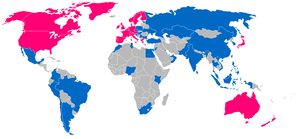Patents provide valuable rights to its holders to exclude others from gaining from something the inventor has already accomplished. Companies and individuals hold patents to financially gain from their ideas. In recent times, however, companies have been founded that hold patents just like a portfolio and maximize the revenues generated from them through various techniques - including arm-twisting corporations through legal means to cough up excessive sums. While, these awards are being offered by the legal system, the costs of running a business has increased substantially. It is in this climate that fair valuations of patents become absolutely essential.
Patents are a strange asset. They can be held to make money or prevent others from financial gains owed to you. Therefore, the valuation strategies have to be tuned to the purpose for which patents are being held. Clearly, when patents are held like a portfolio, there is a trading element to this and the goal of the portfolio is to make profits by buying low and selling high. Calculating this spread is easier said than done, as the value discovery process, as indicated before could be through legal means, which may not be all that fair, and several times could be classified as an induced or distress sale. A company that has already infringed upon a patent only to be hauled up in a future litigation will be forced to pay for that patent at a panic price. This clearly would not constitute the fair value of that patent. That is the inherent issue with valuing a patent - the timing of the usefulness of the patent is largely indeterminate. Moreover, most patents (75%) are worth less than $300K. Therefore, there is a vast pool of patents that are indeterminate in value and potential up-trades later on. The trend now is to determine if these patents are undervalued and to trade them at a perceived fair value. The demand to institute a trading market in these assets clearly would put downward pressure on the prices of patents as portfolio managers try to pick up undervalued patents and sell them for a profit. Analyzing market conditions, timing of revenues, maintainability of the patent, review of prior art, review of citations/references, calculating implied maximum profit potential, assessing technological obsolescence, measuring the useful life of the patent, validating the ability of the management to optimally use the patent, among other things, become key areas of analysis. A patent is worth nothing if it is not maintainable or if the idea will not gain fruition unless newer enabling technologies are discovered. Along with the trend to trade patents, comes the idea that some patents could be worth more than what they should be.
To cater to such business models, new valuation techniques have been gaining ground in the patent valuation business. The IPScore model developed by the European Patent Organization (EPO) provides a comprehensive model for factor scoring a patent on multiple testing criteria. The output of such models can be fed into transference functions that can translate the factor scores into valuation numbers. For instance, a patent's value can be measured as the present value of a stream of maximum profits (i.e. using company-independent discount rates and no consideration of management's ability to implement the patent). Then, the scores from the factor model can be used in a transference function to allocate a portion of the maximum profit value as the fair, realizable value of the patent. Several such transference functions have been developed. Another newer way to look at a patent's value is to adopt the criteria used by search engines. Search engines value a page based on how many times the page has been referenced or linked to by other pages. Similarly, a patent's value increases as it gets cited by more and more publications or research materials. A sudden, mushrooming of citations can be interpreted as signs of an idea whose time has come. Innovative thinking along such lines can be applied to valuing patents. For more details about such valuations, please contact us. We will be happy to explain in detail.
 Image via Wikipedia
Image via Wikipedia![Reblog this post [with Zemanta]](http://img.zemanta.com/reblog_e.png?x-id=eb614540-ce9c-4464-9baa-13834188e69d)




